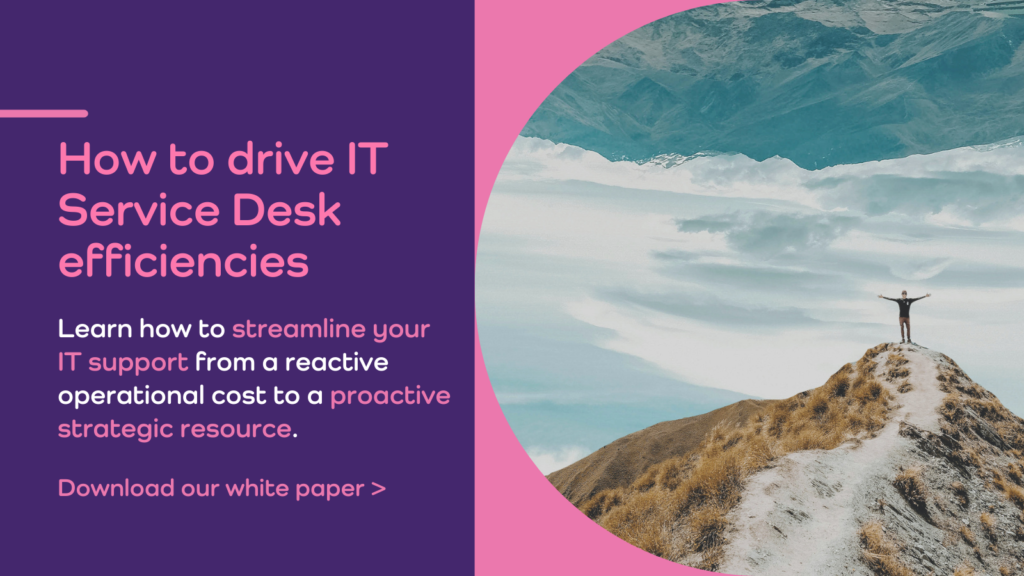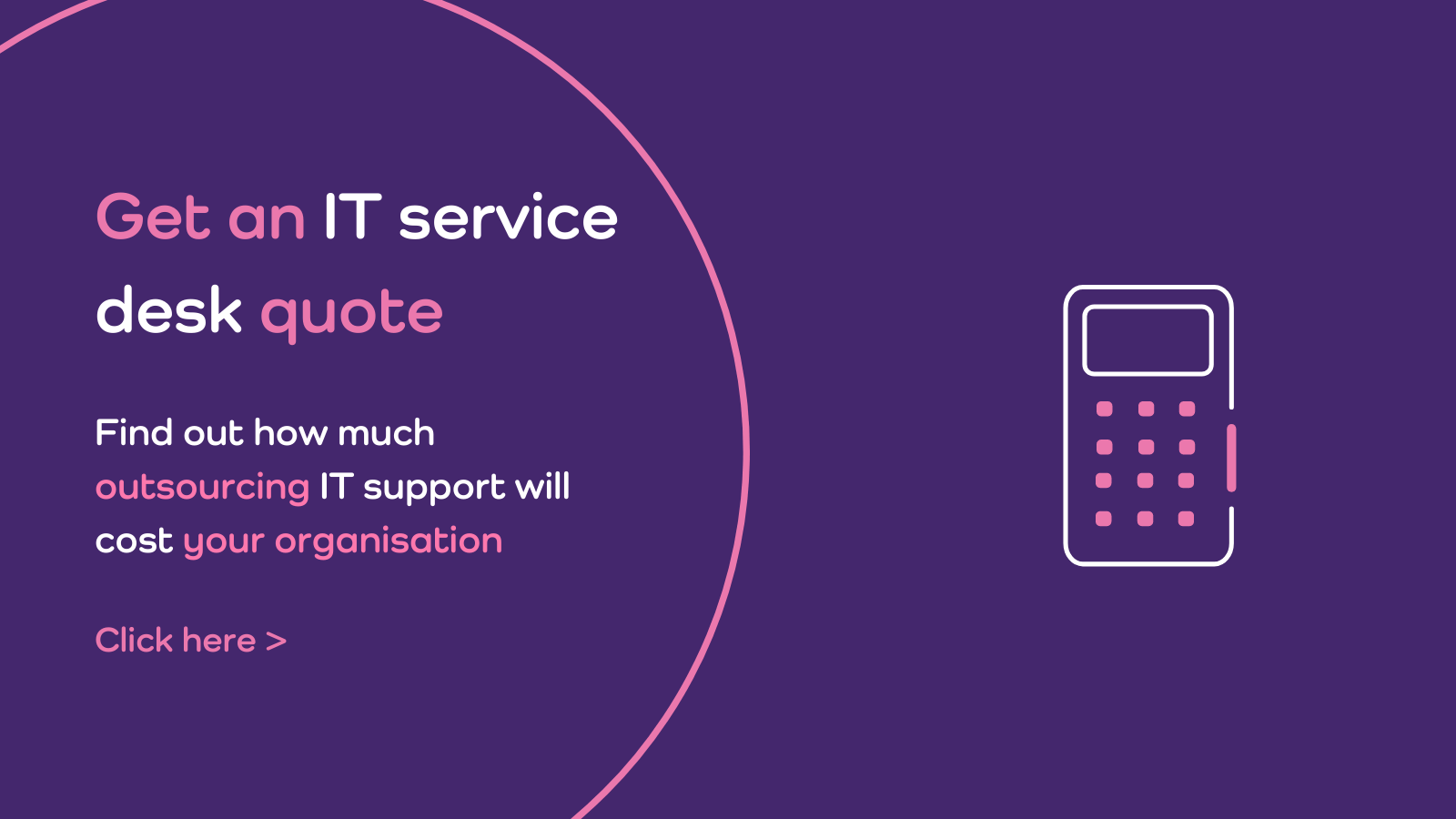IT service desk outsourcing is nothing new, but it is an evolving business function. A convergence of trends is making outsourcing a practical solution, compared to hiring an IT team internally.
For those who already outsource, the convergence of cloud solutions, bring your own device (BYOD), more team members working remotely and more sophisticated cyber security threats, means it’s vital that your business is working with a partner that delivers value and a great user experience.
Organisations need IT outsource partners who are at the forefront of these trends and work to support growth objectives through the timely delivery of IT and software solutions, instead of simply acting as a remote support desk. IT can play an integral role in creating efficiencies and service improvements that benefit an organisation’s bottom line and customers. Choosing the right partner has never been more important.
Your IT service desk contract: 5 things to ask
If your IT service desk contract is up for renewal, don’t let it auto-renew without taking stock of the service you currently receive and whether it’s aligned with your organisation’s requirements now and in the future. Here are five things to consider when sourcing a new IT service desk partner:
#1: Do they deliver on their SLA for incident management?
This is a minimum requirement for any half-decent IT service desk company. Before they can deliver long-term efficiencies for your organisation, they need to be able to solve problems effectively when they arise. Incidents should be handled within the scope of an SLA.
For customers, this should include service that keeps everyone in the loop. Especially if mission critical services go down. Failing to achieve SLAs can cause serious damage to productivity, considering how reliant we are on IT and software. Ensure you are working with a service desk provider who doesn’t keep you waiting when vital systems fail.
#2: Do you need a different level of support?
Most companies grow and change during the lifecycle of an IT service desk contract. Right now, you could have more employees, desks, computers, devices and IT needs, or you may have new business objectives that need support.
Security is also more complex than it was a few years ago, and all organisations are at risk of cyber attack. Staff use their own phones and tablets (BYOD) or may be working remotely and this has to be factored in when ensuring they can work productively anywhere and on any device. Has your IT provider kept up with changing trends? Can they deliver the services you need, efciently and cost effectively?
#3: Does your IT service provider understand your organisation and objectives?
IT service desk support is no longer about mending computers and fixing systems. Modern providers should know your organisation inside and out. They should have a clear idea how IT can play a key role in supporting business objectives and targets.
How well do they understand your overall business aims for the next one to three years? Are they equipped to support these targets? Can they design an IT strategy that will grow and evolve with your organisation? All questions you need to ask and consider when a contract is coming up for renewal.
#4: Do they offer a flexible service that can scale with your business and meet your specific requirements?
While growth may be a target for your organisation, have you thought about what happens if you need to scale back? Over the last few years, most sectors have gone through growth and contractions. No business should be stuck with a service contract they don’t need when it proves too expensive.
IT partners need to deliver on a sliding scale, growing with your business but reducing these services as needed. Flexibility is a valuable feature of modern help desk partners.
#5: Does your IT service provider prioritise Continuous Service Improvement and deliver proactive solutions?
Continuous improvements are when an IT partner constantly learns, adapts and improves services based on growth objectives and solutions that would make the business more efficient.
An effective partner should be proactively presenting solutions to your organisation; after all, they’re the experts. But these shouldn’t necessarily be technology-driven: instead, they should deliver according to what would benefit your organisation, rather than the next cool thing that IT vendors are selling.
It is worth taking these questions into consideration when your IT service desk contract next comes up for renewal. The right IT partner could take your business to the next level, when you look beyond SLA’s and consider how much extra value you can get from a Managed Services provider that takes the time to understand your business.































